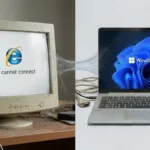Many people complain that their Internet connection is so slow that even downloading text files takes forever. As more people get connected to the Internet, they expect the service to be better and faster. Wired or wireless, they want speed and almost seamless downloads when they stream videos and movies.
The real problem that causes this is that your home network and your Internet service are not properly set up to handle the large amount of data from the source to your home. Ensuring that the infrastructure of your home network is up to the task is one of the keys to have streaming that’s stress-free. Here are some tips on how to remove the bottleneck.
Pick the Right Internet Plan
Before you spend a fortune on the latest networking equipment, make sure that the Internet connection in your home is adequate to your projected Internet activities, such as movie and video streaming, gaming and downloading data files for personal and work-related use. While you may not have control about the ISP’s fast connection reliability, you still have the option to choose the plan that can deliver the data allowance and right speed that you require.
Data Caps
Data allowance is the download limit or data cap that many ISPs are imposing today. Each ISP observes its own policies and plans. To illustrate, your Internet plan says you can use up to 200GB of data monthly with no restrictions at any time of the day you want to use it. This is sufficient for people who update their social media accounts, download files and stream content intermittently. However, if you stream video in HD regularly, 200GB a month is not enough. According to Netflix, a one-hour program in HD consumes more or less 3GB of data while Ultra HD can eat up close to 7GB an hour.
Some Internet service providers offer no caps but in such cases, you are required to pay for it. Often it is offered to subscribers who opt for slower connections, for example, 15Mbps or even lower, because they do not utilize too much data, but it is not ideal for HD streaming and video gaming.
Internet Bandwidth Requirement
You should not be confused. Your ISP sells you bandwidth in Mbps, which means megabits per second. Do not mistake that for megabytes per second or MBps. One byte is equal to 8 bits. Netflix says you need about a bandwidth of 5Mbps to stream an HD video and 25Mbps for an Ultra HD version. If you have a 15Mbps plan, it is not actually enough because there are other devices in your home that will be sharing the same bandwidth, such as your computer, your smartphone, smart TV and other gadget connected to your Internet network.
Likewise, you have to consider that other members of your family will also be streaming video, playing online or downloading files. Further, if you are connected to the same Internet pipe as your neighbors, then you would not be getting the promised bandwidth, particularly during peak hours. It’s probable that you’ll only experience smooth streaming around 3am in the morning when Internet traffic slows down.
Choose your Gear
ISPs normally provide a modem, but ensure that the one they lease to you supports DOCSIS 3.0 for better speed. You can save more if you opt to buy your own compatible modem. Modem/Wi-Fi router combo units are not that great, either.
Your best option is to use a separate high-performance Wi-Fi router (802.11ac is the latest standard) and a modem. This new type of Wi-Fi router can support 8 antennas and can beam-form, which identifies the area devices are connecting from and re-routes increased signal from that particular location.
Get Wired
The best method to increase your broadband speed is to avoid wireless connection and pay for wired Ethernet connection that is more stable and reliable.
These are just some of the things that you can do to make your video streaming, online gaming and other regular Internet activities optimized. You may have to change your Internet plan or your home network hardware. It will also help if you defrag your PC, check for malware and adware and uninstall old programs that you no longer need or use.








